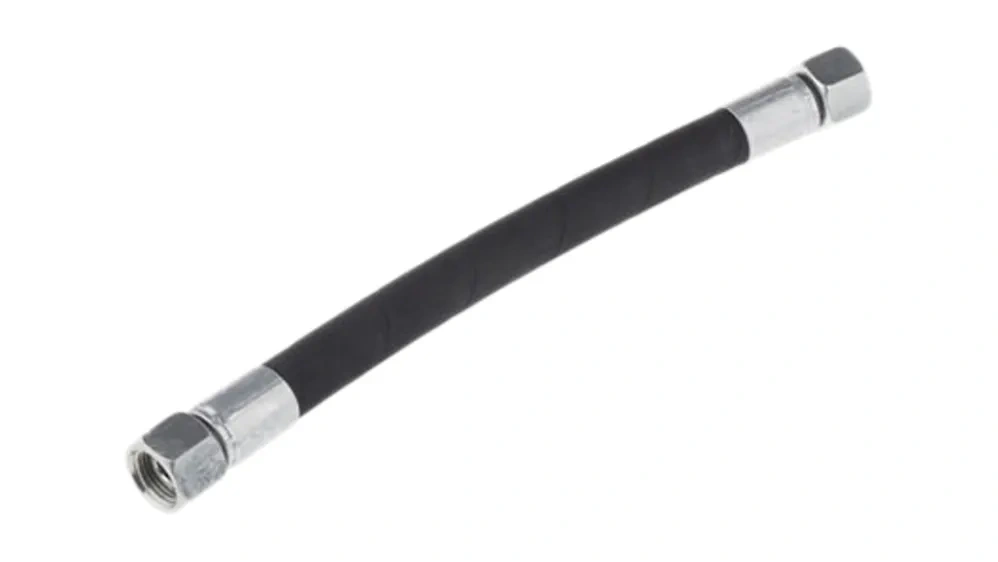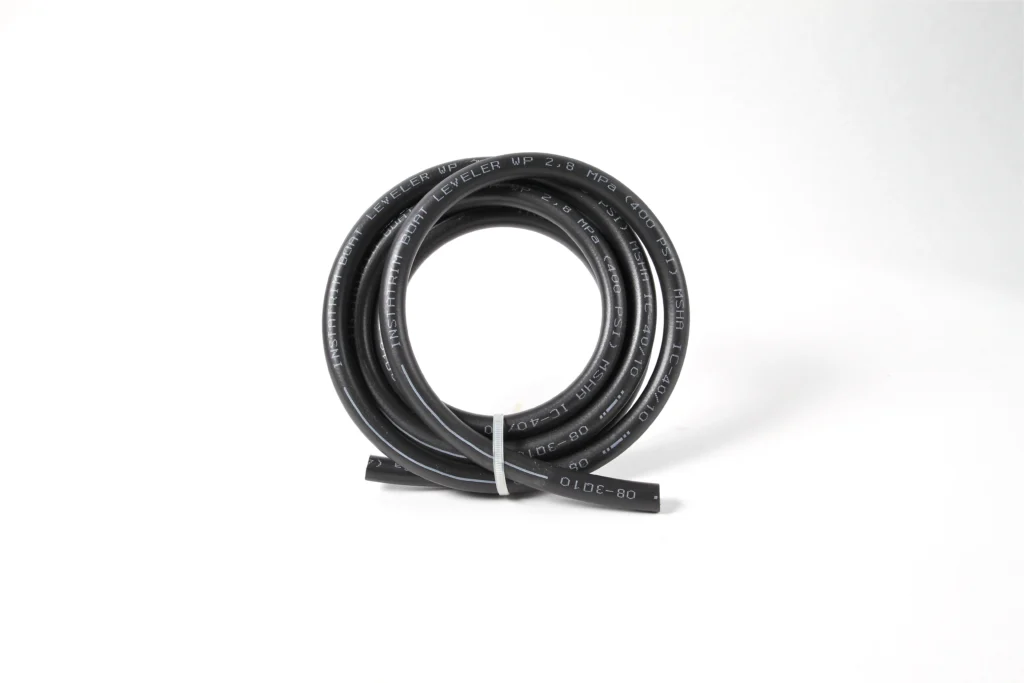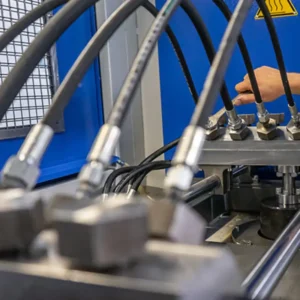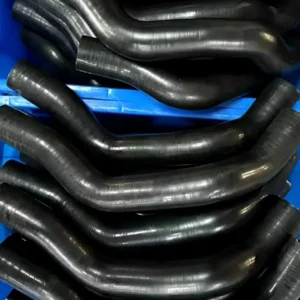Hydraulic hoses act as circulatory systems, conveying high-pressure fluids to power everything from heavy machinery on construction sites to precision robots in manufacturing. To avoid costly breakdowns and dangerous failures, a deep understanding of the dynamics of fluid movement within the hose is crucial.
This is where the concept of flow rate in hydraulic hoses becomes crucial. It’s not just about the amount of fluid flowing, but also its velocity, and how that velocity affects system efficiency, heat generation, and even component life. In this guide, we’ll delve into the fundamental concepts of flow and velocity, and how tools like the Hydraulic Hose Flow Calculator can help us design safer and more effective hydraulic solutions.
What is Flow for Hydraulic Hose?

When we talk about hydraulic hose flow rate, we’re referring to how much hydraulic fluid moves through a hose within a given amount of time. Think of it like water flowing through a garden hose; the flow rate would be how many gallons per minute are coming out.
In hydraulic systems, this flow is crucial because it dictates the speed at which hydraulic cylinders extend, motors rotate, and other components operate. A properly designed system ensures the right flow rate for optimal performance, preventing both sluggish operation and excessive heat generation.
As we delve deeper, we’ll see how understanding and calculating this flow is fundamental to efficient hydraulic system design and troubleshooting.
The Importance of Optimal Flow in Hydraulic Systems
Getting the flow right in a hydraulic system isn’t just about making things move; it’s about making them move efficiently, safely, and without unnecessary wear and tear. If the hydraulic hose flow rate is too low, your equipment will operate slowly, impacting productivity. If it’s too high, you risk creating excessive heat, pressure drops, and even cavitation, all of which can damage components and reduce the lifespan of your hydraulic system.
That’s why accurately determining the required flow and then matching it with the right hose is a cornerstone of hydraulic engineering. It’s a delicate balance that directly affects performance and longevity.
How to Calculate Hydraulic Hose Flow Rate?

Calculating the hydraulic hose flow rate is a fundamental step in designing and maintaining an efficient hydraulic system. While specialized tools like a hydraulic hose flow rate calculator can simplify this, understanding the underlying principles is key. We typically measure flow rate in units such as gallons per minute (GPM) or liters per minute (LPM).
The flow rate is often determined by the pump’s output or the requirements of the actuator (like a cylinder or motor). Let’s explore the primary methods and formulas we use to determine this crucial parameter.
Formulas for Determining Hydraulic Flow
When we set out to calculate the hydraulic hose flow rate, we primarily rely on knowing either the pump’s displacement and speed, or the cylinder’s volume and extension time. These are the two most common scenarios we encounter. For a pump, the flow is a function of how much fluid it displaces with each revolution and how fast it spins.
For a cylinder, the flow is determined by how much volume needs to be filled (or emptied) and how quickly that process needs to happen. Understanding these relationships allows us to accurately size our hydraulic hoses and ensure optimal system performance.
1. Based on Pump Displacement and RPM:
This is the most common way to determine the flow rate when you know the specifications of your hydraulic pump.
- Formula: Q=(D×RPM)/231 (for GPM) or Q=(D×RPM)/1000 (for LPM)
- Where:
- Q = Flow Rate (GPM or LPM)
- D = Pump Displacement (cubic inches per revolution for GPM, or cubic centimeters per revolution for LPM)
- RPM = Pump Revolutions Per Minute
- 231 = Conversion factor for cubic inches to gallons
- 1000 = Conversion factor for cubic centimeters to liters
Example: Let’s say we have a hydraulic pump with a displacement of 2.5 cubic inches per revolution, operating at 1800 RPM.
Q=(2.5 in3/rev×1800 rev/min)/231 in3/gal Q=4500/231 Q≈19.48 GPM
2. Based on Cylinder Volume and Extension Time:
Sometimes, we need a specific flow rate to achieve a desired cylinder speed.
- Formula: Q=(A×L)/(t×231) (for GPM) or Q=(A×L)/(t×1000) (for LPM)
- Where:
- Q = Flow Rate (GPM or LPM)
- A = Piston Area (square inches for GPM, or square centimeters for LPM)
- L = Stroke Length (inches for GPM, or centimeters for LPM)
- t = Time to extend/retract (minutes)
- 231 = Conversion factor for cubic inches to gallons
- 1000 = Conversion factor for cubic centimeters to liters
Example: Imagine a hydraulic cylinder with a 4-inch bore diameter (meaning a piston area of approx. 12.56 in2) and a 24-inch stroke length. We want it to extend in 10 seconds (0.167 minutes).
First, calculate piston area: A=π×(diameter/2)2=3.14159×(4/2)2=3.14159×4=12.566 in2
Now calculate flow rate: Q=(12.566 in2×24 in)/(0.167 min×231 in3/gal) Q=301.584/38.637 Q≈7.80 GPM
The Role of a Hydraulic Hose Flow Rate Calculator
While we’ve detailed the manual calculations, a hydraulic hose flow rate calculator is an invaluable tool, especially when dealing with various units or needing quick, accurate results. These online or software-based tools typically allow you to input your known values (e.g., pump displacement and RPM, or cylinder dimensions and desired time) and instantly provide the flow rate.
They minimize the chance of calculation errors and make the design process much more efficient. When searching for a reliable hydraulic hose flow rate calculator, ensure it clearly defines the input units and provides results in your preferred units (GPM, LPM, etc.).
What is the Velocity for a Hydraulic Hose?

Beyond just how much fluid moves (flow rate), we also need to consider velocity for the hydraulic hose. This refers to the speed at which the hydraulic fluid travels through the hose. Imagine a river: the flow rate is the total amount of water passing a point per second, while the velocity is how fast a single drop of water is moving.
In hydraulic systems, fluid velocity is crucial because it directly impacts pressure drop, heat generation, and the potential for cavitation (the formation of vapor bubbles in the fluid due to low pressure, which can damage components). Maintaining an optimal fluid velocity is as important as achieving the correct flow rate for system efficiency and longevity.
Why Fluid Velocity Matters in Hose Selection
The speed at which hydraulic fluid travels through a hydraulic hose directly influences the overall health and efficiency of your system. If the fluid velocity is too high, it leads to excessive friction, which translates into increased heat generation and significant pressure drops along the hose. This can reduce the power available at your actuators and contribute to premature wear of components.
If the fluid velocity is too low, the system might be sluggish, and the hoses might be oversized and unnecessarily expensive. We aim for an “ideal” velocity range, typically within 10-20 feet per second for pressure lines and lower for suction and return lines, to minimize energy loss and maximize component life.
How to Calculate Hydraulic Hose Velocity?
Calculating hydraulic hose velocity is crucial for optimizing system performance and preventing issues like excessive heat and pressure drop. Once we know the hydraulic hose flow rate and the internal diameter of the hose, we can determine how fast the fluid is moving. This calculation helps us ensure we’ve selected the appropriate hose size for the given flow, keeping the fluid velocity within recommended limits. Just like with flow rate, understanding the formula is key, even if we use a hydraulic hose flow rate calculator that can also handle velocity computations.
The Formula for Hydraulic Fluid Velocity
To calculate the velocity for hydraulic hose, we use a straightforward formula that relates flow rate to the cross-sectional area of the hose. This formula is vital for ensuring your hydraulic hoses are sized correctly, balancing efficient flow with minimized energy loss and heat generation. Remember that consistency in units is paramount for accurate results.
- Formula: V=(0.3208×Q)/A (for feet per second) or V=(21.2×Q)/ID2 (for feet per second, using inches for ID)
- Where:
- V = Velocity (feet per second – ft/s)
- Q = Flow Rate (GPM)
- A = Internal Cross-sectional Area of the hose (square inches – in²)
- ID = Internal Diameter of the hose (inches – in)
- 0.3208 = Conversion constant to match units (from GPM and in² to ft/s)
- 21.2 = Simplified conversion constant when using ID in inches
Let’s break down the second formula, as it’s often more practical since hose sizes are typically given by their internal diameter.
Example: Suppose we have a hydraulic hose flow rate of 15 GPM and we’re considering a hose with an internal diameter (ID) of 0.75 inches.
V=(21.2×15)/(0.75)2 V=318/0.5625 V≈565.0 ft/s
Hold on! That’s an extremely high velocity and likely indicates an error in our target velocity or an extremely undersized hose. This highlights why calculating hydraulic hose velocity is so important. Typical recommended velocities are much lower, usually between 10-20 ft/s for pressure lines, 4-10 ft/s for return lines, and 2-4 ft/s for suction lines.
Let’s recalculate with a more realistic scenario. What if we want a velocity of 15 ft/s with a flow rate of 15 GPM? What ID would we need?
We can rearrange the formula to solve for ID: ID2=(21.2×Q)/V ID=(21.2×Q)/V
ID=(21.2×15)/15 ID=21.2
ID≈4.60 inches
This example demonstrates how vital these calculations are. An ID of 4.60 inches is very large for a typical hydraulic hose, indicating that a single hose might not be sufficient for a 15 GPM flow at a low velocity, or perhaps the target velocity needs to be reconsidered if space is limited. Most often, we’ll know the hose ID and the flow rate, and then we’ll calculate the resulting velocity to ensure it’s within the acceptable range.
Conclusion
Using a hydraulic hose flow rate calculator can certainly simplify the computations, but knowing the underlying formulas empowers us to make informed decisions about hose sizing and system design.
By carefully calculating both flow and velocity, and by selecting hydraulic hoses that meet industry standards and are appropriate for the specific application, we can avoid costly breakdowns, reduce energy loss, and significantly extend the lifespan of our valuable hydraulic equipment. Investing the time to understand these principles and utilize the right tools is an investment in the reliability and safety of your hydraulic operations.




